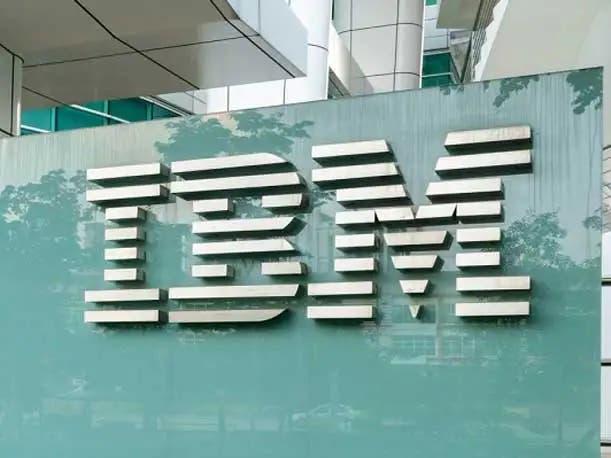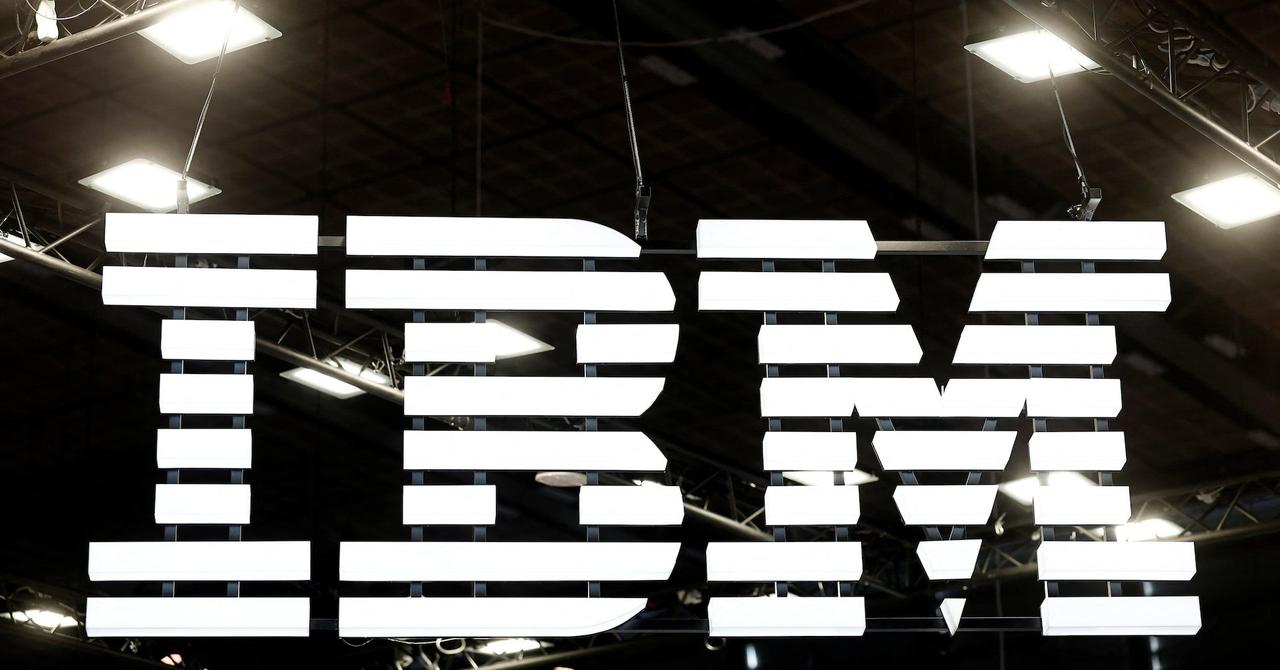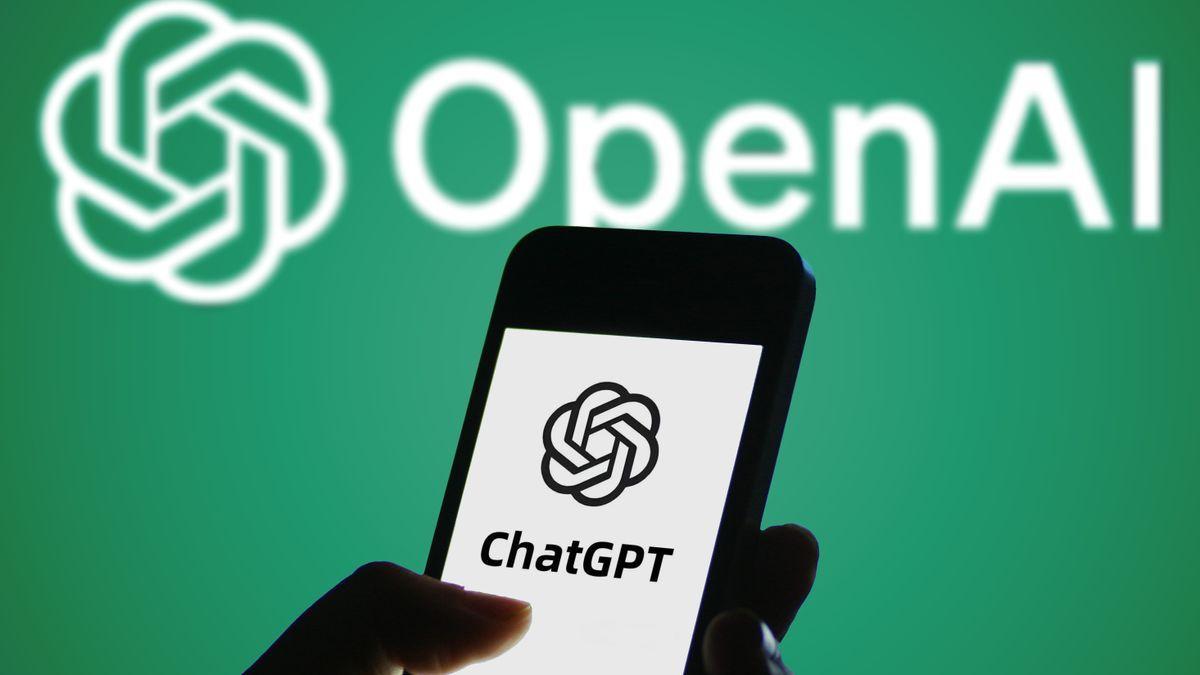IBM's Strong Q3 2025: AI Fuels Revenue Growth Across Software, Hardware, and Consulting
4 Sources
4 Sources
[1]
IBM prefers to rent GPUs from cloudy rivals
Infra revenue soars and AI helps everything ... except the share price If IBM reveals improved profit margins or a fresh round of redundancies, AI may be the reason, because Big Blue today revealed that its own "Project Bob" developer assistance tools have improved productivity among its coders by 45 percent. Big Blue boss Arvind Krishna revealed that figure in prepared remarks [PDF] delivered as part of the venerable company's Q3 2025 results, which included revenue of $16.33 billion and net income of $1.75 billion, representing nine percent year-over-year growth and a nice change from the $330 million loss posted for Q3 2024. Krishna pointed to IBM winning $9.5 billion of work related to generative AI as a fine achievement, and a 59 percent year-over-year jump for mainframe revenue - a result that reflects the recent launch of the new Z17 machines. The debut of revised big iron helped IBM's infrastructure revenue to grow 15 percent year-over-year. AI is also partly responsible for that growth, because as Krishna pointed out, storage is a key part of AI infrastructure and IBM is therefore selling plenty of it. The CEO said IBM's infrastructure business will benefit more from enthusiasm for AI than the company's public cloud. Asked if the Big Blue cloud can achieve the same kind of growth reported by other cloud operators who serve AI workloads, Krishna pointed out that IBM partners with hyperscalers. "A thing that we haven't talked about, but it's certainly no secret, for example, we are one of CoreWeave's large clients. We also tend to use a lot of infrastructure at AWS, at Azure as well as at GCP," he said. "We [have] got a huge opportunity to do both consulting projects as well as deploy our software on those infrastructures for our clients," he said. Krishna pointed to "one of our very large health insurance clients" that prefers not to use public cloud, "but they [are] perfectly fine getting a private instance in a cloud and deploying models there, deploying our software stacks there and getting growth. So we tend to do that." "We also tend to, in some cases, for example, with Grok, we are deploying Grok in people's own data centers. So that's a big opportunity. That will show up in revenue for us, both in consulting as well as in software because on top of the Grok infrastructure, we tend to put our software stacks in some instances. So it's less about us getting an opportunity in our cloud only, but much more that that's a growth vector that we are able to ride and that helps increase overall growth rate in both software as well as in consulting." That rather suggests the Big Blue cloud won't need to make bulk GPU buys, or match rival hyperscalers' enormous capital expenditure on new and improved bit barns. Krishna praised Red Hat for growing bookings by "about 20 percent" and improving revenue by 12 percent, but also noted that growth slowed a little at the software business unit - even though its AI-enabled products are in demand - before predicting future revenue will settle at "mid-teens or close to mid-teens growth." CFO James Kavanaugh weighed in by stating "Year-to-date, from a software perspective, we're growing 8.5 percent overall, approaching nine percent right now. About two points of that growth is coming out from our GenAI book of business." AI is also helping IBM's consulting business, which returned to growth in the quarter and is already working on 200 projects involving what Big Blue calls "Digital Workers" - IBM-speak for agentic AI. The company predicted constant currency revenue growth of more than five percent for the full FY 2025. Investors didn't like what they heard, as IBM shares sank from over $288 apiece to $269 in after-hours trading. ®
[2]
IBM: $9.5-Billion AI Book Of Business Drives Q3 Growth Across Software, Hardware And Consulting
IBM reported solid third-quarter growth across nearly its entire product and service portfolio as the company raised its outlook for the rest of 2025. IBM said its generative AI book of business now stands at more than $9.5 billion with AI continuing to drive demand for the company's software, consulting and hardware offerings -- the latter including the System z17 mainframe upgrade introduced earlier this year. The book of business for generative AI consulting services alone accelerated to $1.5 billion in IBM's third quarter, ended Sept. 30, IBM executives said during the company's earnings call Wednesday. "AI adoption is accelerating and hybrid cloud remains the foundation of enterprise IT," IBM President and CEO Arvind Krishna said during the call with financial analysts, noting that those two align with IBM's hardware, software and consulting portfolios. [Related: IBM CEO On Growing Channel Revenue, Quantum Computing Opportunities, And Why 'AI Is Not Magic'] IBM reported $16.33 billion in revenue for the quarter, up 9 percent year over year (up 7 percent in current currency) from $14.97 billion in the third quarter of 2024. Net income for the quarter was $1.74 billion, $1.87 per share, compared to a $330 million loss one year before. The company also raised its outlook for all of 2025, saying it now expects revenue growth of more than 5 percent for the year and expects $14 billion in free cash flow for the full year. "We exceeded our expectations on revenue, profitability, adjusted EBITDA earnings per share and free cash flow, reflecting the strength of our portfolio and the disciplined execution across our business," said senior vice president and CFO James Kavanaugh on the call. (Despite the upbeat results, IBM shares were trading around $268.76 at 8:00 PM EDT, down $18.75 or 6.52 percent from the $287.51 close on Wednesday.) Krishna said IBM's strong results across revenue, profit and cash flow exceeded expectations "with all of our segments accelerating sequentially. These results underscore the strength of our business model and portfolio and the innovation we are delivering to clients." "The breadth of our AI offerings is a key differentiator, combining an innovative technology stack with consulting at scale," the CEO said. The latest generative AI book of business figure marks a substantial increase from the $7.5 billion figure in the 2025 second quarter. It shows how much of a driver AI has become for many facets of IBM's business. (Book of business includes sales and new contract signings for software, services and consulting revenue. IBM uses the book of business metric to track momentum and growth in specific strategic areas of its business.) IBM reported software revenue of $7.2 billion in the quarter, up 10 percent year over year, with automation revenue gaining 24 percent and hybrid cloud (Red Hat) revenue growing 14 percent. Data processing revenue was up 8 percent while transaction processing revenue declined 1 percent. Headwinds in the consulting market had led to concerns that IBM's consulting revenue in the third quarter could be flat or even decline. But the company reported consulting revenue of $5.3 million, up 3 percent from a year earlier, including a 5 percent revenue gain in intelligent operations and a 2 percent increase in revenue from strategy and technology. "Consulting [revenue growth] accelerated, reflecting growing demand for AI services as clients need help designing, deploying and governing AI at scale," Krishna said on the call. Infrastructure revenue in the quarter grew a robust 17 percent to $3.6 billion in the quarter, including a 28 percent gain in hybrid infrastructure, a 10 percent gain in distributed infrastructure, and a whopping 61 percent increase in IBM System z revenue - driven by the company's latest mainframe System z refresh cycle. "IBM z [mainframe products] delivered its highest third-quarter revenue in nearly two decades...fueled by the early success of our z17 platform [that's] purpose built for AI and hybrid cloud with breakthrough capabilities in real-time inferencing, quantum-safe security and AI-driven operational efficiency," Kavanaugh said. "With continued strength in [mainframe] z17, we now expect infrastructure to contribute over one and a half points to IBM's revenue growth this year," Kavanaugh added. "Our biggest beneficiaries of AI infrastructure is our mainframe and our storage portfolios," Krishna said. "With the latest generation [of our] mainframe...a fully populated single system is capable of doing 450 billion inferences per day. As clients purchase that capability, that will be both a further accelerant to mainframe infrastructure growth, but it also comes with a software stack that helps them do all of that inferencing." "If I look at our storage portfolio, as many people have realized, you need a lot of storage to be able to do model training, and we are going to be beneficiaries of that inside our storage portfolio," the CEO added. IBM, meanwhile, continues to expand its use of AI technology internally to improve its operating margins by utilizing AI across finance, supply chain, sales, human resources, service delivery and customer support "to improve efficiency and reduce costs," Kavanaugh said. Despite economic uncertainty, Krishna said he sees IT budgets "staying healthy" into 2026 because businesses and organizations continue to leverage IT for competitive advantage and realize operational efficiencies. And he said IBM's hybrid cloud and automation product portfolios are well-positioned to meet the needs of the latter. In response to an analyst's question, Krishna said that so far IBM has not seen any impact of the U.S. federal government shutdown. He said the government largely purchases IBM software on a subscription basis and he noted that IBM's systems are running critical operations such as Social Security Administration and Veterans Administration payment systems Kavanaugh said he is optimistic going into next year. "We're operating in an attractive TAM [total addressable market] and a positive backdrop. From a technology perspective, overall, we feel very good about technology being a source of competitive advantage, and you're seeing that play out in areas around hybrid cloud modernization, around AI, around automation, in many areas. And we see that continuing in the market, so we couldn't be more optimistic around '26."
[3]
This Key IBM Business Is Being Boosted by AI | The Motley Fool
International Business Machines' (IBM 0.87%) largest segment is software, but the consulting business is a hidden gem that enables the company to build integrated solutions for its clients. Unfortunately, clients have been slow to commit to discretionary technology projects in an uncertain economic environment, creating a consulting headwind. While software revenue soared 9% in IBM's third quarter thanks to strong demand for hybrid cloud and automation, the consulting segment reported middling 2% growth. Consulting growth looks likely to accelerate in the near future as IBM leans into artificial intelligence. While consulting revenue isn't as lucrative as software revenue, consulting contracts help drive incremental software and infrastructure sales, and can accelerate IBM's overall growth. As of the end of the third quarter, IBM has booked $9.5 billion worth of generative AI business. Consulting accounts for a bit over 80% of that total. In the third quarter alone, IBM's consulting business booked $1.5 billion worth of new AI business. Large enterprises looking to deploy AI workloads and agents need more than just software. AI implementation services are a critical component, and that's an area where IBM shines. Earlier this year, Gartner put IBM in the "emerging leaders" category for generative AI consulting and implementation services. That $1.5 billion of new consulting business related to AI will take time to convert to revenue, but as that process unfolds, the headwinds facing the consulting business will start to be overcome by AI growth. "So as those consulting projects start to get executed and as that backlog builds up, certainly the contribution to consulting is going to be very real," said IBM CEO Arvind Krishna during the third-quarter earnings call. " ... it is overcoming the headwinds from staff augmentation projects going away and people getting rid of discretionary spending and consulting." Already, AI is improving results in the consulting segment. IBM noted that all lines of business within its consulting segment returned to sequential growth in the third quarter, and that segment profit margin reached its highest level in three years. AI projects have the potential to be more lucrative than the types of projects that are fading away, which can help IBM's overall profit margin expand. An improving story in the consulting business, plus a strong mainframe product cycle and strength in the software business, led IBM to raise its full-year outlook. The company now expects constant-currency revenue growth of more than 5% and free cash flow of around $14 billion. While an uncertain economy will continue to pressure aspects of the consulting business, AI-related projects are turning into quite a boon for this critical IBM segment.
[4]
IBM capitalizes on the rise of AI to exceed expectations in Q3
Buoyed by the rise of artificial intelligence and sustained demand for its software and mainframes, IBM posted better-than-expected quarterly results. The group posted revenue of $16.33bn, above the $16.09bn expected, with adjusted EPS of $2.65, again above the $2.45 anticipated by analysts. This performance reflects the strong performance of its software and consulting businesses, supported by AI-focused projects. The software segment, up 10% to $7.21bn, is driving growth, benefiting from corporate investment in the modernization of their digital infrastructures. Infrastructure also grew 17% to $3.56bn, boosted by the success of IBM's new mainframe, designed for artificial intelligence and highly popular in the financial sector. According to CFO Jim Kavanaugh, these machines offer enhanced security and data sovereignty, two decisive criteria for customers. The AI-related order book reached $9.5bn, up from $7.5bn in the previous quarter, while consulting grew 3% to $5.32bn. Despite a nearly 5% decline in its share price after the close, IBM is revising its outlook upward and now forecasts annual growth of more than 5% at constant exchange rates, compared to a previous estimate of at least 5%.
Share
Share
Copy Link
IBM reports robust Q3 2025 financial results, highlighting a significant $9.5 billion AI book of business that propelled revenue increases across its software, consulting, and infrastructure segments. The company's strategic focus on hybrid cloud and AI partnerships is redefining its market approach and driving efficiency.
IBM's Strong Q3 2025: AI Fuels Revenue Growth
IBM reported robust Q3 2025 results: $16.33 billion revenue (9% YOY increase) and $1.75 billion net income, exceeding expectations . This performance stems from IBM's intensifying focus on AI and its hybrid cloud strategy. CEO Arvind Krishna emphasized AI's positive impact across IBM’s hardware, software, and consulting portfolios .

Source: CRN
AI Business Expansion Across Segments
IBM’s generative AI book of business expanded to $9.5 billion from $7.5 billion last quarter, influencing all core segments .
- Software: Revenue rose 10% to $7.2 billion, with automation up 24% and hybrid cloud (Red Hat) growing 14% .
- Consulting: Despite challenges, consulting grew 3% to $5.3 billion, driven by AI projects .
- Infrastructure: Revenue jumped 17% to $3.6 billion, including a 61% surge in IBM System z revenue .

Source: Market Screener
Internal AI and Strategic Cloud Approach
Internally, IBM's “Project Bob” boosted coder productivity by 45% . Strategically, IBM partners with hyperscale providers (CoreWeave, AWS, Azure, Google Cloud) for AI infrastructure, focusing on consulting and software deployment over proprietary public cloud investments . This supports diverse client environments.

Source: The Register
Related Stories
Mainframe Resurgence Driven by AI
The Z17 mainframe, designed for AI and hybrid cloud, significantly aided infrastructure revenue. It offers real-time inferencing, quantum-safe security, and AI-driven efficiency. Krishna noted a single Z17 system can perform 450 billion inferences daily, a powerful AI tool .
Positive Outlook Amidst Market Dynamics
Despite a minor after-hours stock dip, IBM raised its 2025 outlook: over 5% revenue growth and $14 billion in free cash flow . The consulting segment, though facing headwinds, benefits from surging AI implementation demand, offsetting discretionary spending cuts. IBM's robust AI strategy and partnerships position it for sustained growth.
References
Summarized by
Navi
[1]
[2]
[4]
Related Stories
IBM's Q4 Performance: Software and AI Boost Revenue Amid Consulting Slowdown
25 Jul 2024

IBM's Q2 Earnings Beat Estimates, Driven by AI Mainframe Sales, but Software Segment Disappoints
24 Jul 2025•Business and Economy

IBM's Q3 2024 Results: AI Momentum Amid Mixed Performance
24 Oct 2024•Business and Economy








